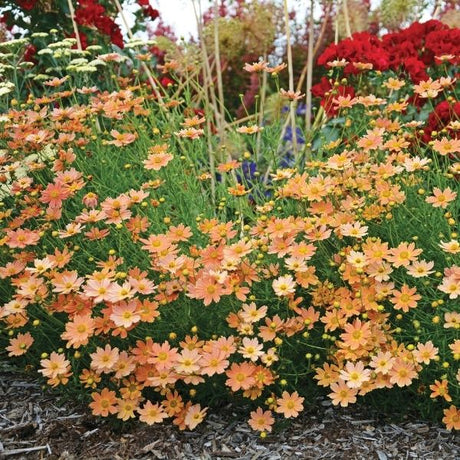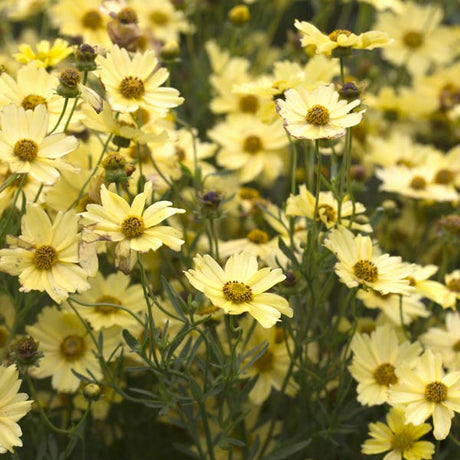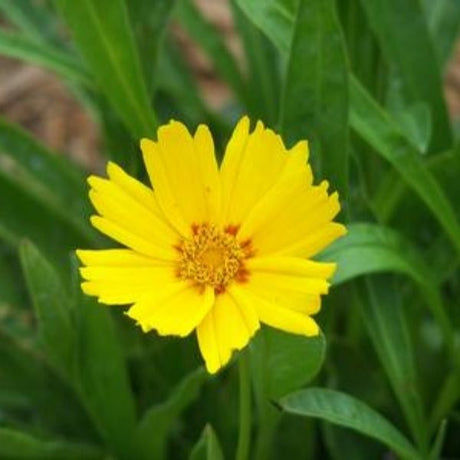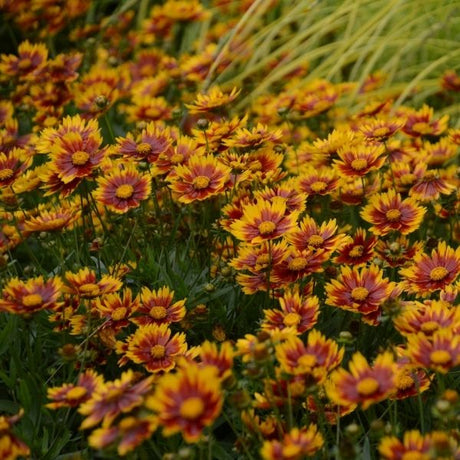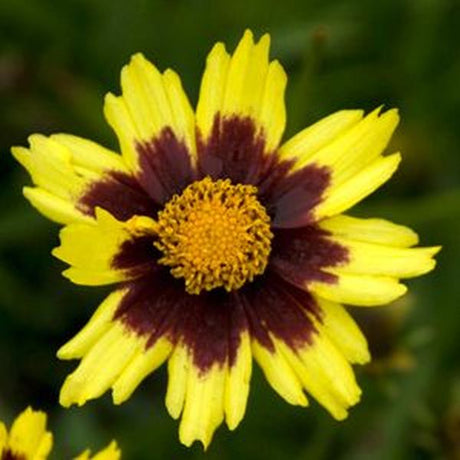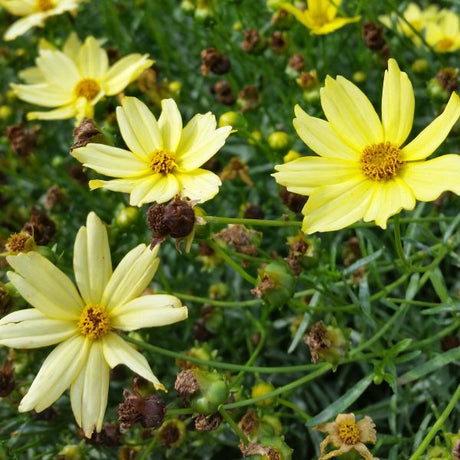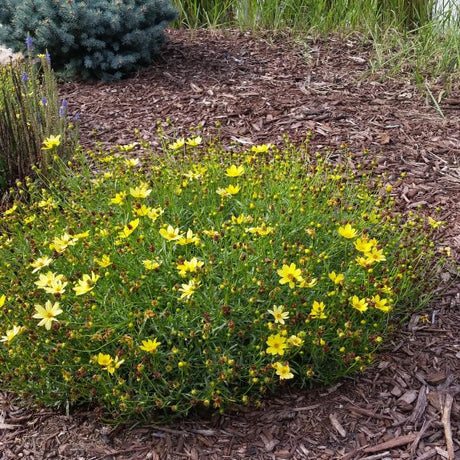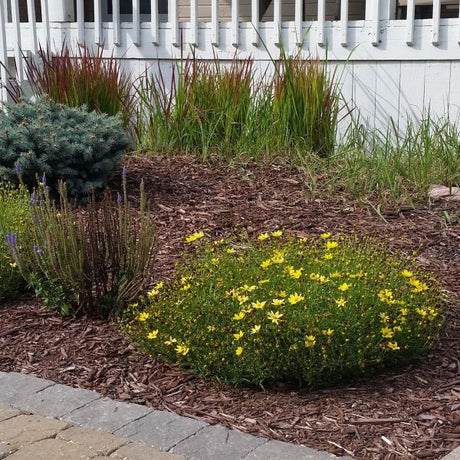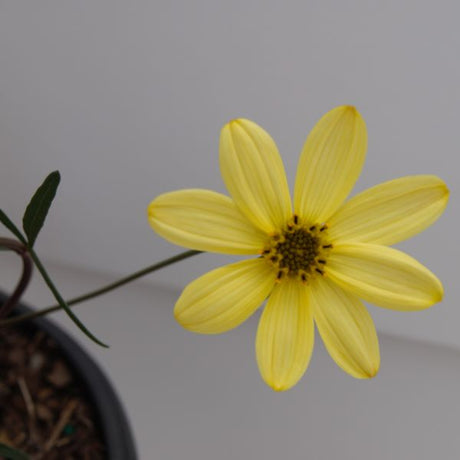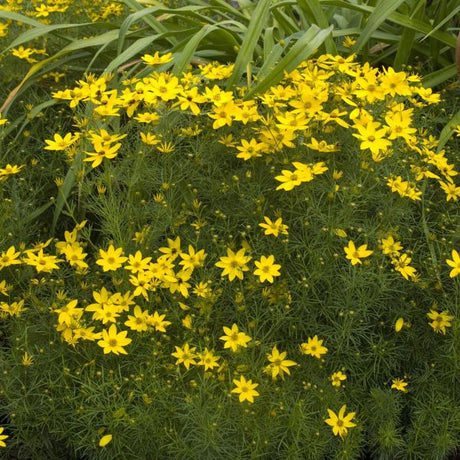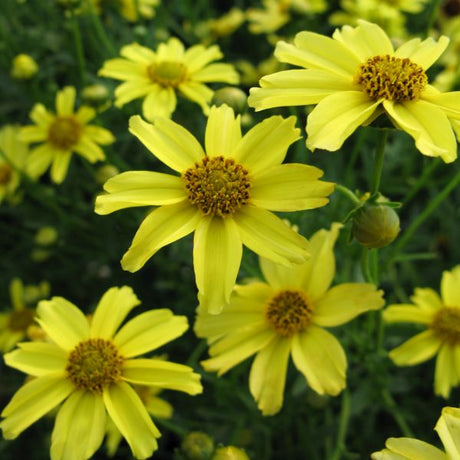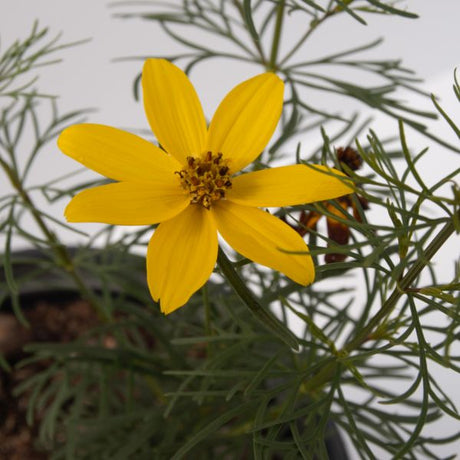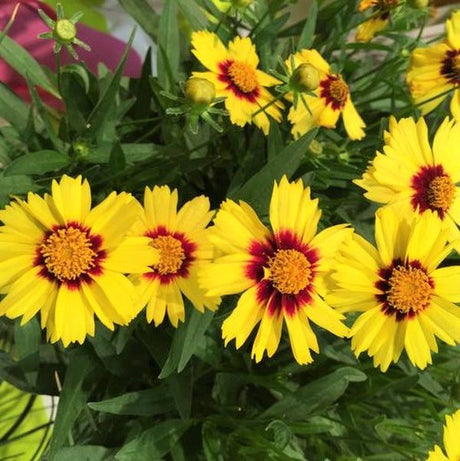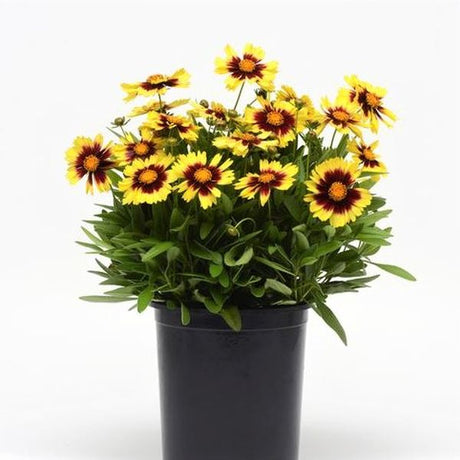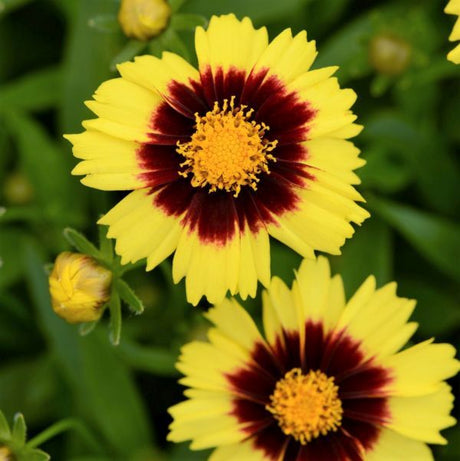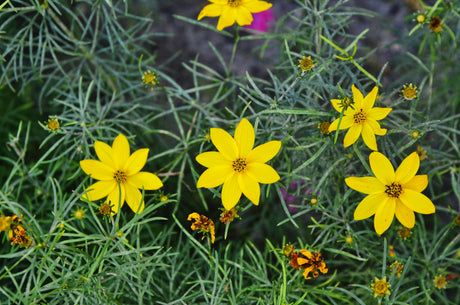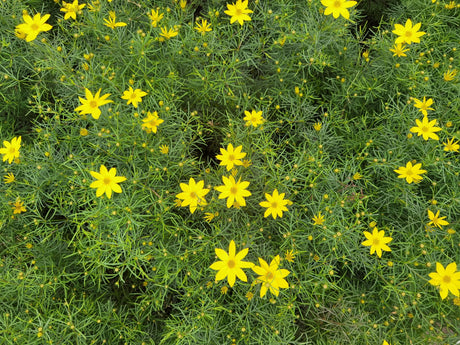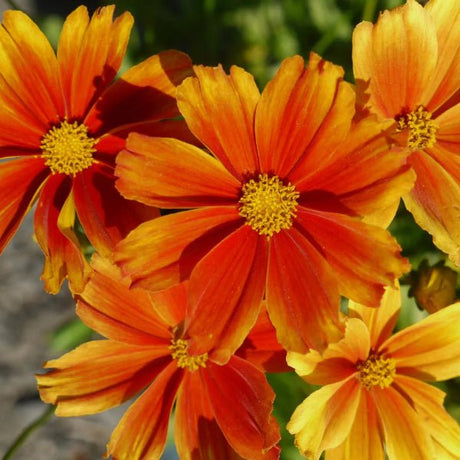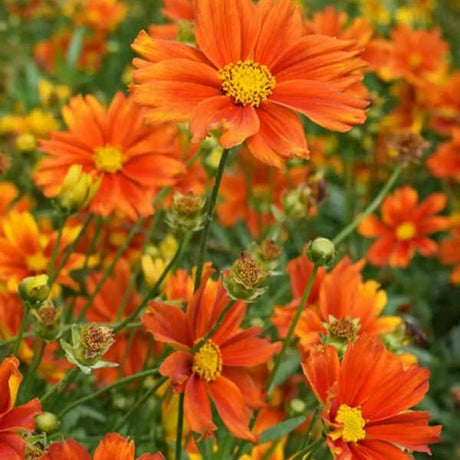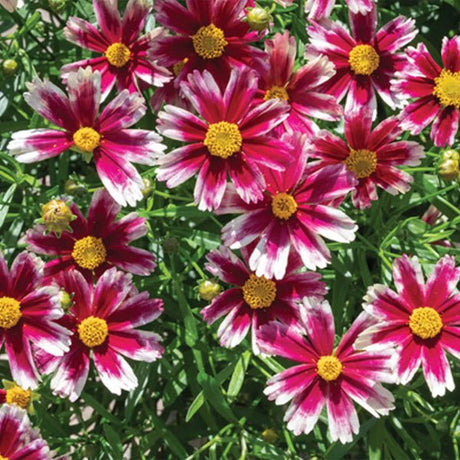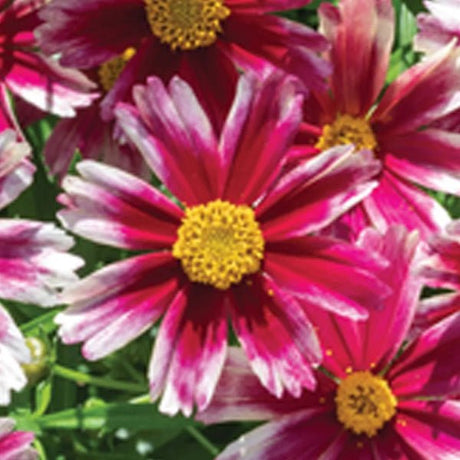-
Coreopsis verticillata 'Novcorcar'
PreorderRegular price From $1699Unit price /Unavailable -
Coreopsis pubescens 'Sunshine Superman'
PreorderRegular price From $1699Unit price /Unavailable -
Coreopsis x 'Red Elf'
PreorderRegular price $3453Unit price /Unavailable -
Coreopsis 'Creme Brulee'
Up to 53% offPreorderSale price From $1699 Regular price $3582Unit price /Unavailable -
Coreopsis grandiflora 'Sonnenkind'
Up to 45% offPreorderSale price From $1699 Regular price $3098Unit price /Unavailable -
Coreopsis x 'Lil Bang™ Daybreak'
PreorderRegular price From $1699Unit price /Unavailable -
PERMATHREAD™ Red Satin Coreopsis
Coreopsis x 'Red Satin' PP# 25,736
PreorderRegular price $3215Unit price /Unavailable -
Big Bang™ Cosmic Eye Coreopsis
Coreopsis x 'Cosmic Eye'
PreorderRegular price $3484Unit price /Unavailable -
Li'l Bang™ Goldilocks Coreopsis
Coreopsis x Li'l Bang 'Goldilocks' PP32,336
PreorderRegular price $3443Unit price /Unavailable -
Coreopsis verticillata 'Moonbeam'
PreorderRegular price From $1699Unit price /Unavailable -
Coreopsis verticillata 'Zagreb'
PreorderRegular price From $1699Unit price /Unavailable -
UpTick™ Yellow & Red Coreopsis
Coreopsis x 'Baluptowed'
PreorderRegular price $3214Unit price /Unavailable -
Li'l Bang™ Firewheel Coreopsis
Coreopsis x Li'l Bang 'Firewheel' PP33,713
PreorderRegular price $3476Unit price /Unavailable -
-
Li'l Bang™ Darling Clementine Coreopsis
Coreopsis hybrid ‘Darling Clementine’ PP 31,843
Sold outNew arrivalRegular price $2920Unit price /Unavailable -
Li'l Bang™ Candy Stripes Coreopsis
Coreopsis hybrid ‘Candy Stripes’ PP 33,888
Up to 43% offNew arrivalSale price From $1699 Regular price $2956Unit price /Unavailable

Add a burst of cheerful, daisy-like color to your landscape with the easy-going, sun-loving Coreopsis! Also called Tickseed or Calliopsis, Coreopsis is a hardy perennial flower from the Asteraceae family known for its long-lasting yellow, pink, and bi-color blooms that brighten borders, pollinator gardens, and cottage-style beds all season long!
These trouble-free flowering plants are xeric, drought-tolerant, deer-resistant, and attract butterflies and bees with ease. With tidy mounding forms or taller upright options, Coreopsis is a go-to for beginner gardeners, native plant lovers, and anyone seeking long summer color with little fuss!
Key Benefits of Coreopsis
Thriving in full sun and tolerant of various soil types and conditions, it is a popular plant for beginner gardeners.
- Bright, daisy-like flowers in yellow, pink, or red tones
- Toothy-edged petals
- Long bloom time from early summer into fall
- Attracts butterflies and beneficial pollinators
- Drought-tolerant and deer-resistant once established
- Thrives in poor to average soils and full sun
- Easy to grow, low maintenance, and great for beginners
- Useful in borders, rock gardens, mass plantings, and containers
Landscaping Uses

Coreopsis plants offer vibrant color, versatility, and lasting charm for nearly any garden style. Mounding varieties are fantastic for edging pathways, flower beds, or container gardens. Taller types shine at the back of borders, paired with ornamental grasses or along sunny fences.
Try mixing Coreopsis with other drought-tolerant perennials like Daylilies, Autumn Joy Sedum, and Salvia for extended interest and easy-care combinations. Perfect for cottage gardens, butterfly habitats, drought-tolerant designs, and even rock gardens, this genus delivers long seasonal value with very little effort. The roots hold soil and stand strong on hard-to-mow hillsides and eroding slopes.
About Coreopsis (Tickseed)
Coreopsis is a dependable, low-maintenance genus of flowering perennials in the Asteraceae family. Native to North and South America, these sunny plants are often referred to as Tickseed due to the shape of their seeds, or Calliopsis in older texts.
The botanical name comes from the Greek words koris (bedbug) and opsis (view), a nod to the shape of its fruit (achenes). Despite that unflattering etymology, Coreopsis is one of the most beloved plants for naturalistic and sunny landscapes!
Top 5 Coreopsis Varieties At Nature Hills
- Zagreb Coreopsis: Compact mounds topped with bright golden-yellow blooms
- Moonbeam Coreopsis: Soft, buttery-yellow flowers on fine, threadleaf foliage
- Red Satin Coreopsis: Rich, wine-red petals with glowing golden centers
- Sienna Sunset Coreopsis: Warm sunset hues of orange and peach in soft tones
- Early Sunrise Coreopsis: Cheerful semi-double golden blooms perfect for bright borders
Coreopsis Care Tips
Coreopsis are very easy-to-grow herbaceous perennials! Learn more about planting perennials.
- Sunlight: Full sun (6+ hours daily)
- Soil: Well-drained, tolerant of poor or sandy soils
- Watering: Water regularly until established; use the Finger Test to monitor moisture
- Mulch: Apply arborist mulch after planting
- Deadheading: Learn how to deadhead for longer bloom time
- Spacing: Plant 2-3 feet apart, depending on variety
- Winter prep: Cut back stems to 1-2 inches after frost
- Division: Divide clumps every few years in spring
Color Your Garden With Carefree Coreopsis

From sunny borders to butterfly-friendly havens, Coreopsis plants offer nonstop charm with minimal maintenance. Their long bloom time, drought resistance, and cheery daisy-like flowers make them a garden must-have for beginners and seasoned green thumbs alike.
Perfect for if you're creating a pollinator paradise, a low-maintenance design, or a classic cottage garden, we’re sure there's a Tickseed variety just waiting to shine!
Shop Nature Hills Nursery's vibrant Coreopsis collection today and bring long-lasting color and carefree beauty to your landscape!
FAQ's for Buying Coreopsis Online
What is Coreopsis and why is it popular in gardens?
What is Coreopsis and why is it popular in gardens?
Coreopsis, also known as tickseed or calliopsis, is a low-maintenance perennial with daisy-like blooms in yellow, pink, and other cheerful colors. It thrives in full sun, tolerates a variety of soils, and offers a long blooming season, making it ideal for beginner gardeners.
Where should I plant Coreopsis in my garden?
Where should I plant Coreopsis in my garden?
Mounded varieties are perfect for borders and edging, while taller types look great at the back of flower beds or along fences. Choose a sunny location and space plants 2–3 feet apart depending on the variety.
How do I care for Coreopsis plants?
How do I care for Coreopsis plants?
Plant in spring, apply compost and mulch, and water during dry spells. After the first frost, cut stems back to an inch or two above ground. Every few years, divide clumps in spring to maintain plant vigor.
Do Coreopsis plants attract pollinators?
Do Coreopsis plants attract pollinators?
Yes! Coreopsis flowers are a favorite among bees and butterflies, making them a great addition to pollinator gardens. Their vibrant colors and prolonged bloom time support wildlife throughout the growing season.
What plants pair well with Coreopsis?
What plants pair well with Coreopsis?
Coreopsis looks stunning alongside small Daylilies, Salvia, and Autumn Joy Sedum. These companion plants provide contrasting textures and colors that enhance the overall appeal of your perennial garden.

